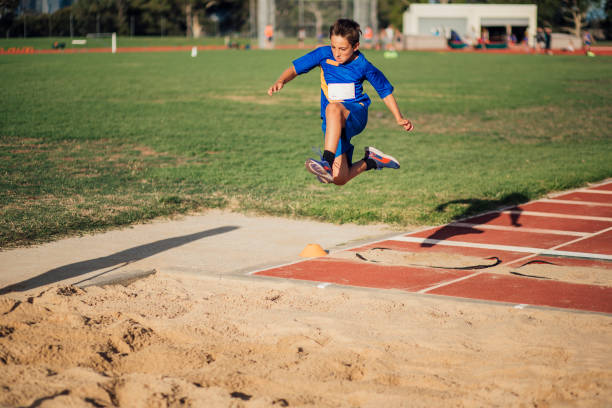"Breaking Down the Art of the Triple Jump: A Fusion of Speed, Strength, and Technique"
The triple jump, often regarded as one of the most challenging events in track and field, traces its roots back to the ancient Olympic Games held in Greece around 708 BC. Originally dubbed the "hop, skip, and jump," this event has evolved over centuries, shaping the careers of many athletes who have dared to master its complex technique. It was introduced into the modern Olympic Games in 1896, but only for men. Women had to wait almost a century later, until 1993, to witness the inclusion of their event.

The Three-Point Rhythm: Mechanics of the Triple Jump
The triple jump is a unique blend of speed, strength, and technique. It consists of three sequential actions - the hop, the step, and the jump. Each phase requires a specific set of skills: the hop demands speed and power, the step calls for balance and control, and the jump necessitates explosive strength. The interplay of these elements makes the triple jump a fascinating event to dissect.
The Modern Scene: Current Trends and Standouts
In the current sports landscape, the triple jump is marked by intense competition, with athletes pushing the boundaries of human performance. Some of the most notable names in the sport today include Christian Taylor and Yulimar Rojas. Taylor, a four-time World Champion, and Rojas, the current women’s world record holder, embody the spirit of the triple jump with their exceptional athleticism and dedication.
The Triple Challenge: Benefits and Difficulties of the Triple Jump
The triple jump is not just a test of physical prowess but also a mental challenge. Training for this event improves an athlete’s speed, power, agility, and coordination. However, the high impact nature of the event can lead to injuries if not performed with proper technique. This duality of benefits and challenges adds to the allure of the triple jump.
Practical Implications: Translating the Triple Jump into Everyday Fitness
While the triple jump is primarily an elite sport, its training methodologies can be adapted for general fitness routines. Incorporating exercises like bounding and plyometrics, which are fundamental to triple jump training, can enhance muscular strength and power in everyday individuals. This real-world application underlines the broader relevance of the triple jump beyond the confines of the stadium.
In conclusion, the triple jump is a captivating fusion of speed, strength, and technique that has a storied history and a dynamic present. Whether you’re an athlete aiming for Olympic gold or an individual seeking to enhance your fitness, there’s much to learn and appreciate from this unique event. As the sport continues to evolve, it will undoubtedly continue to inspire and challenge athletes worldwide.






